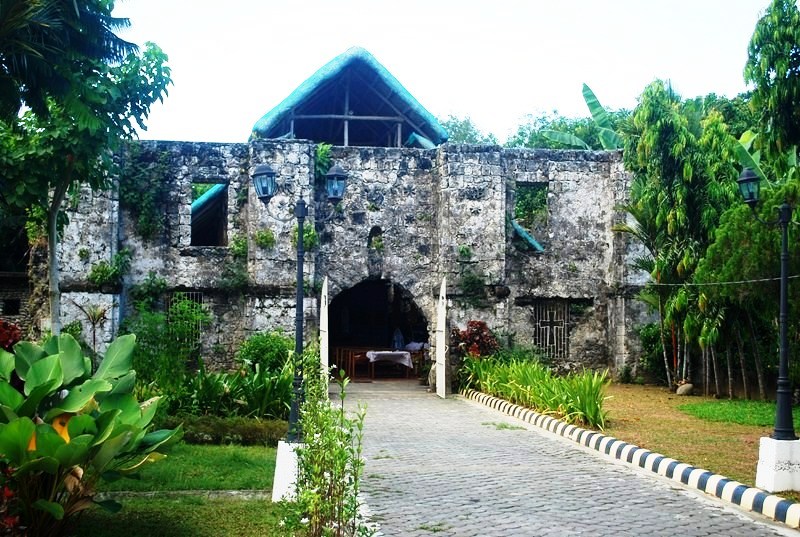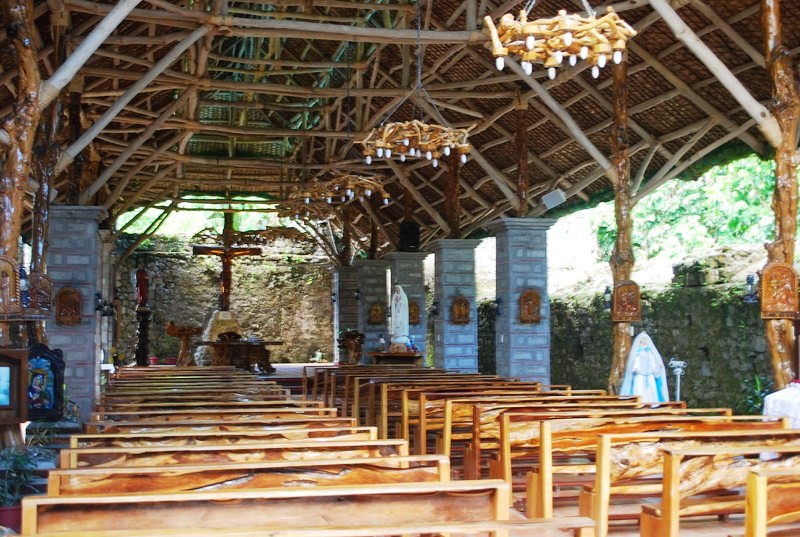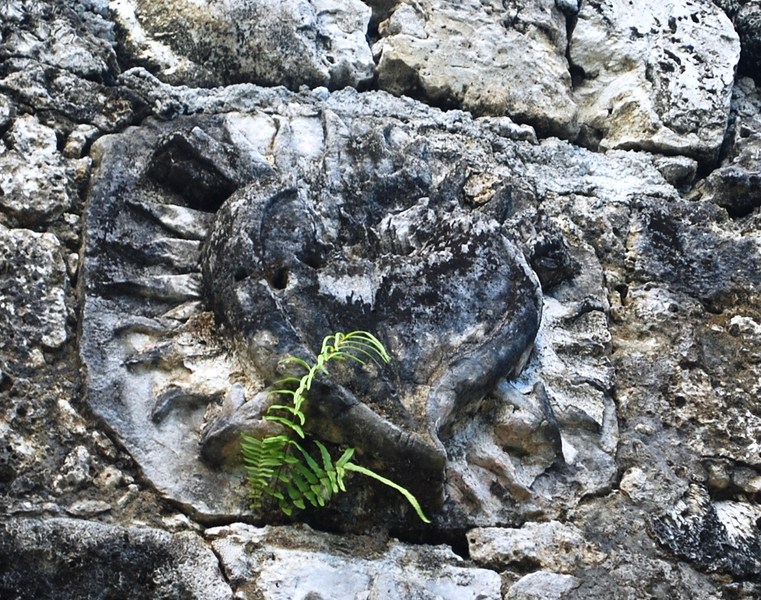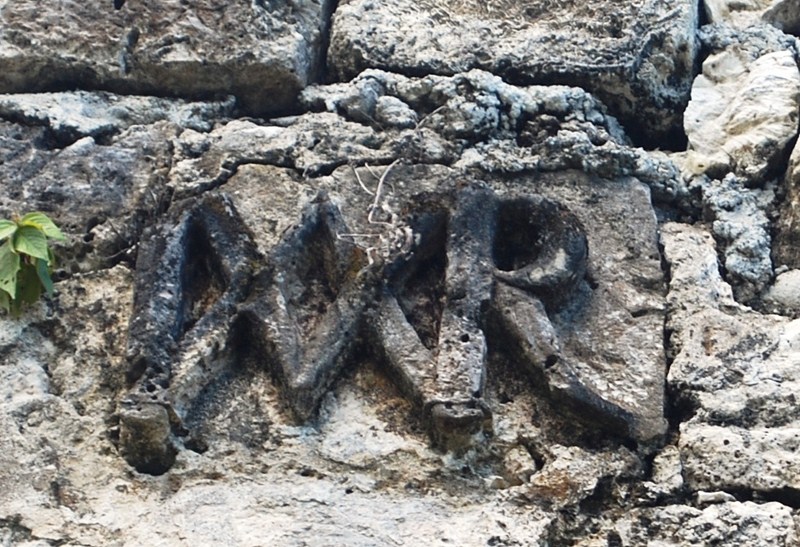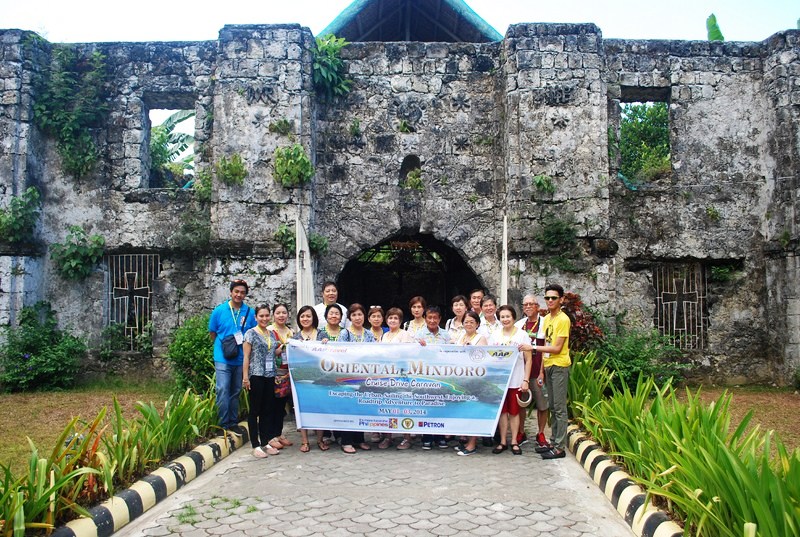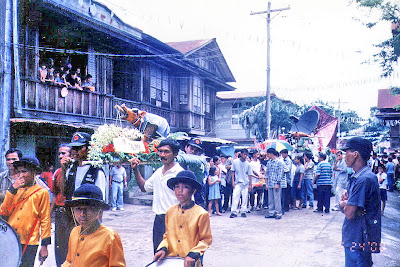After lunch at Benilda ng Bancuro Resort & Restaurant, next on our Oriental Mindoro Cruise Drive Caravan tour was the Bancuro Church Ruins, more popularly known as Simbahan Bato (Stone Church), just a short drive from the resort.
This old, roofless ruin is what remains of an Augustinian Recollect church and priory that was built in the 1690s, on swampy ground, with adobe and coral rock. The church also served as a fort and a place of refuge against Moro invaders.
After several tries by marauding Moro pirates, the place was finally overran by them. The pirate were said to be looking for the church’s bell, said to be made of gold but, not being able to find it, they instead burned the church to the ground in 1824.
The 2-level church has never been reconstructed and its coralstone and adobe walls were crumbling and creeping with vines until the 1960s, when a small chapel (literally “a church within a church”) was built within its massive walls. It was renovated in 2011.
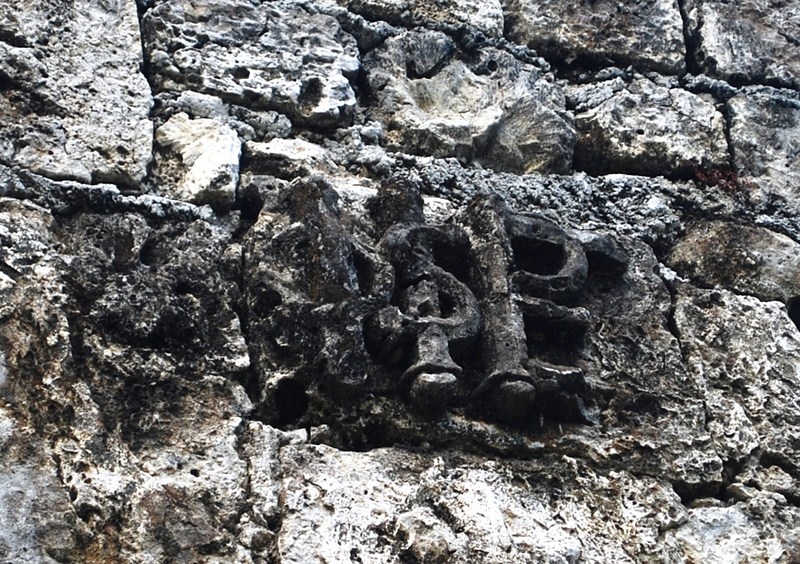
Still trying to decipher this. I recognize the pierced heart on the left. The symbol beside it looks like the Greek symbol for “pi.”
Above the main entrance arch, on the second level, is a small statue niche, above which is the Augustinian symbol of the pierced heart. Flanking it are rectangular openings. Pockets along the walls display several Christian icons. Outside the native-style church is a small plaza with 2 shrines (one for Jesus and the other for the Virgin Mary).
Simbahan Bato: Brgy. Bancuro, Naujan, Mindoro Oriental. It is a 45-min. jeepney ride from the town proper.
Automobile Association Philippines (AAP): 28 EDSA, Greenhills, San Juan City. Tel: (632) 655-5889. Fax: (632) 655-1878. E-mail: info@aap.org.ph. Website: www.aap.org.ph.
AAP Travel: G/F, Sea Tower Bldg., 2332 Roxas Blvd. cor. Arnaiz Ave., Pasay City. Tel: (632) 551-0025. Fax: (632) 551-0014. E-mail: info@aaptravel.com. Website:www.aaptravel.com.ph.

